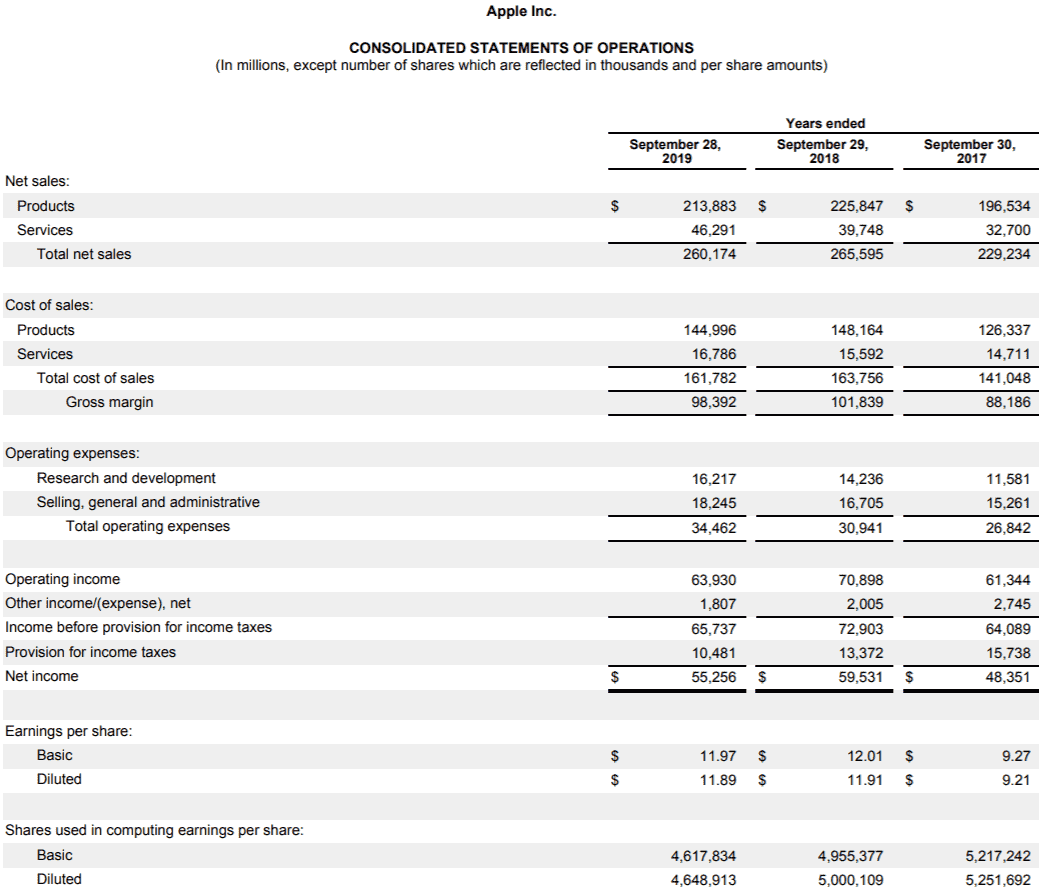What Is A Profit And Loss Statement?
The profit & loss statement, or income statement, is one of the main financial statements of a business that shows its profit or loss for a specific period. Public companies operating in the United States are required by law to provide their profit and loss statement at the end of every quarter and fiscal year.
Q3 2020 hedge fund letters, conferences and more
The P&L statement starts with a company’s revenue and ends with its net profit after subtracting operating and non-operating expenses, such as cost of goods sold or SG&A (Selling & Administrative expenses). Having a complete understanding of the income statement is essential for investors to analyze a company’s long-term outlook.

Profit And Loss Statement: A Real Example
Now that you know what a profit and loss statement is, let’s take a look at a real example of a profit & loss statement. Here’s an example of Apple’s profit and loss statement, or consolidated statement of operations, for the years 2017–2019.

Source: Apple’s 10K, Oct 31, 2019
Profit & Loss Statement Items
As discussed above, the income statement starts with a company’s revenue and ends with its net profit after subtracting operating and non-operating expenses. Here, we’ll analyze what goes on a profit and loss statement and discuss the various P&L statement items.
Sales/Revenue
Revenue is the top-line of the income statement and represents the company’s income from sales of goods or services before subtracting any kind of expenses. If a company generates sales from different sources, it can list them in the income statement, as Apple does:

Source: Apple’s 10K, Oct 31, 2019
Cost Of Goods Sold (COGS)
The cost of goods sold line, or cost of sales, represents the total costs of manufacturing the products sold by the company. It includes items like labor and raw materials.
Gross Profit or Gross Margin
The gross profit is equal to revenue minus cost of goods sold. It is also known as gross margin, as you can see in the Apple statement below. This may generate some confusion for novice investors since the term gross margin is also used to indicate a company’s gross profit margin as a percentage of revenue.

Source: Apple’s 10K, Oct 31, 2019
Operating Expenses
Operating expenses represent the costs incurred by a company to run its core operations. The most common operating expenses are SG&A expenses (Selling, General & Administrative expenses), that consist of non-manufacturing costs like marketing, accounting, human resources, and more. Another typical operating expense is R&D (Research & Development), which consists of costs to design new products, technologies, or services.

Source: Apple’s 10K, Oct 31, 2019
Non-Operating Expenses
Non-operating expenses are costs that are not related to a company’s core operations. Interest expense is one of the most common non-operating expenses.
Income Tax
The income tax line represents the total amount of taxes paid by the company during a specific period.

Source: Apple’s 10K, Oct 31, 2019
Net Income
Net income, or net profit, is what remains for the business after subtracting all costs and taxes.

Multi-Step Profit & Loss Statement
Apple’s profit and loss statement that we’ve just analyzed is a multi-step income statement. A multi-step P&L statement categorizes a company’s expenses into different groups based on their nature. Public companies operating in the United States are required by law to use a multi-step income statement since it provides the most accurate analysis of the business.

Single Step Profit And Loss Statement
While a multi-step P&L statement categorizes a company’s expenses into different groups based on their nature, a single-step profit and loss statement gets to a company’s net income with a simple formula that subtracts all the expenses from the company’s revenue.

Article by Finbox.io

